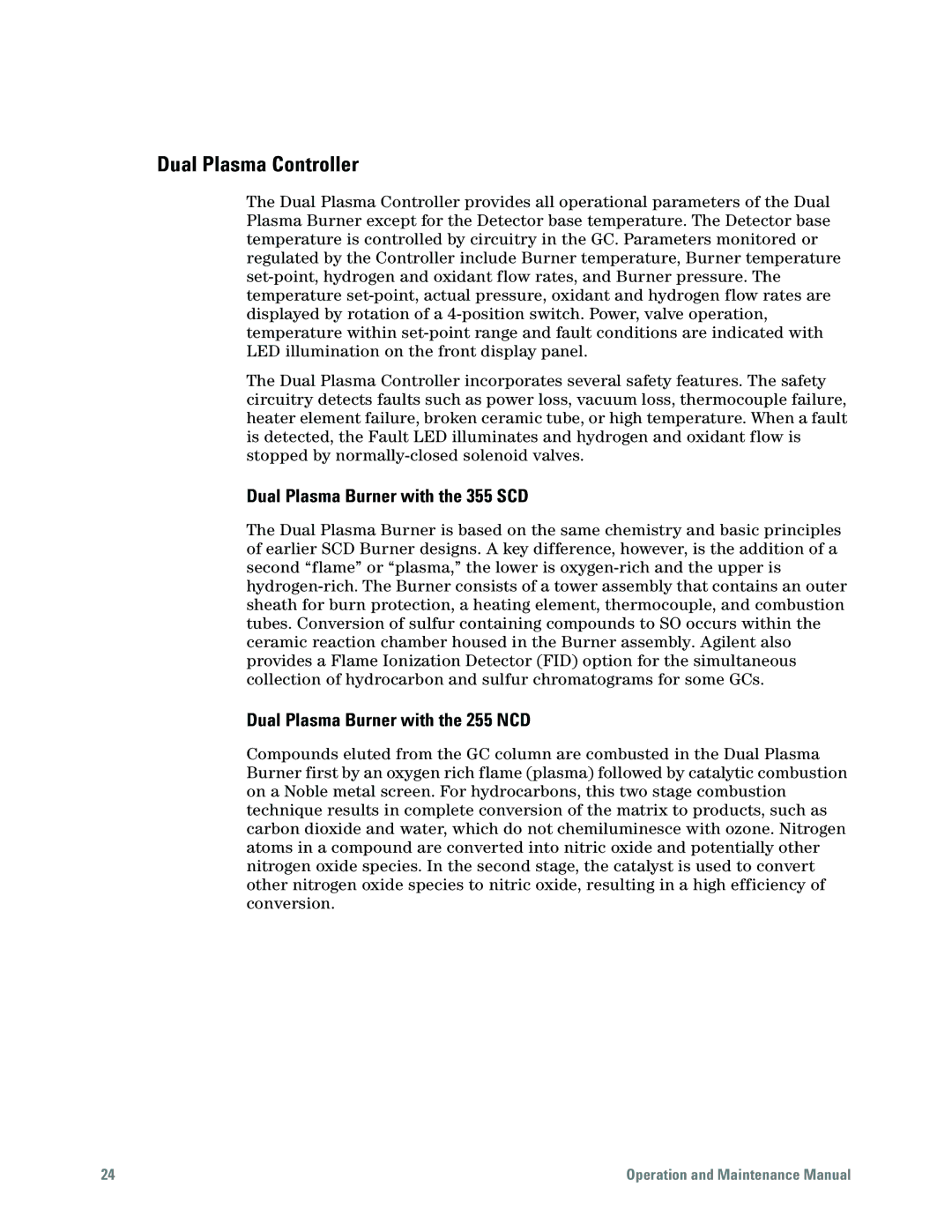Dual Plasma Controller
The Dual Plasma Controller provides all operational parameters of the Dual Plasma Burner except for the Detector base temperature. The Detector base temperature is controlled by circuitry in the GC. Parameters monitored or regulated by the Controller include Burner temperature, Burner temperature
The Dual Plasma Controller incorporates several safety features. The safety circuitry detects faults such as power loss, vacuum loss, thermocouple failure, heater element failure, broken ceramic tube, or high temperature. When a fault is detected, the Fault LED illuminates and hydrogen and oxidant flow is stopped by
Dual Plasma Burner with the 355 SCD
The Dual Plasma Burner is based on the same chemistry and basic principles of earlier SCD Burner designs. A key difference, however, is the addition of a second “flame” or “plasma,” the lower is
Dual Plasma Burner with the 255 NCD
Compounds eluted from the GC column are combusted in the Dual Plasma Burner first by an oxygen rich flame (plasma) followed by catalytic combustion on a Noble metal screen. For hydrocarbons, this two stage combustion technique results in complete conversion of the matrix to products, such as carbon dioxide and water, which do not chemiluminesce with ozone. Nitrogen atoms in a compound are converted into nitric oxide and potentially other nitrogen oxide species. In the second stage, the catalyst is used to convert other nitrogen oxide species to nitric oxide, resulting in a high efficiency of conversion.
24 | Operation and Maintenance Manual |
